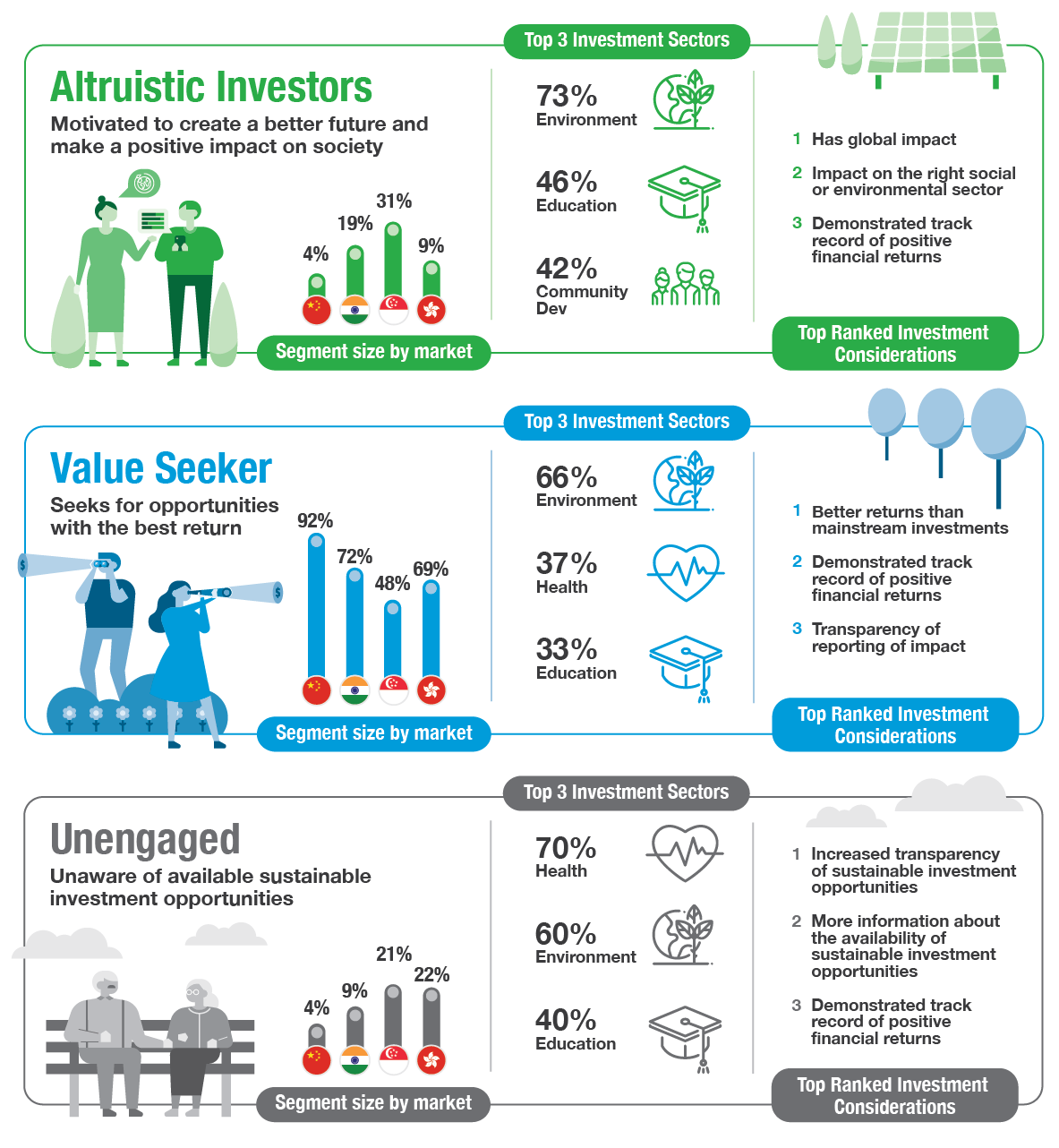
The 2018 Asian Venture Philanthropy Network (AVPN) Annual Conference in June focused in part on the Continuum of Capital: the flow of financial, human and intellectual capital from social investors to non-profits, social enterprises and ESG-compliant businesses. Smoothing this flow – that is, uniting investors keen to combine social impact and returns with high-potential projects in need of capital – will become increasingly important in the Asia-Pacific region as its investors dedicate more resources to sustainable investing. It will also require a rigorous approach to the kinds of information disseminated to stakeholders along this continuum.
Unlocking Asia’s potential
New research commissioned by Standard Chartered shows that while 86 percent of investors across China, Hong Kong, India and Singapore claim to be currently engaged in sustainable investments, most of them lack a clear understanding of what constitutes sustainable investing. Moreover, the top demands of those with no exposure to such investments are increased transparency of sustainable investment opportunities and the need to obtain more information about them. If their requirements are met, they are likely to allot 12% of their investment portfolios to sustainable investments.
Part of the issue is that sustainable investing is a relatively new field in Asia: although globally such assets have existed for a decade, most investors in the region have started engaging with them only in the past five years, according to the Asia Sustainable Investing Report 2018. Moreover, as expectations have shifted from charity and philanthropy towards investing with impact, information flows that investors typically expect to receive from return-oriented investments have not necessarily kept pace.
Asia-Pacific investors in the Standard Chartered survey currently donate 8 per cent of their assets to charity, and this is expected to increase. But most investors are open to shifting allocations from philanthropy towards sustainable investments and impact investing, motivated by earning a profit while making an impact. The key to this is demonstrating reach and impact through better data.
Speaking at the AVPN conference plenary session Vic Malik, Standard Chartered Private Banking Managing Director and Head of Investment Advisory for ASEAN & South Asia, put it this way: “Over the past 15-20 years practitioners in the field found that the act of giving back didn’t necessarily have KPIs associated with it: it was an emotional act and that was it. But we believe it is something that can be structured through KPIs and metrics so the donor understands the effectiveness of his or her contribution and a way of measuring that giving.”
The search for clarity and simplicity
The Standard Chartered survey found that the majority of investors in the four key Asian markets (70 per cent) are “value seekers”, wanting to combine social impact with the best returns; just 14 per cent are purely altruistic (though the proportions vary between markets). The survey also suggests that value-seeking investors in Asia ask for more education about ESG investment opportunities and the impact their funds can make beyond achieving profits, with the greatest challenge in major markets like mainland China and India where the concept is least mature.

This puts the onus on NGOs, charities and sustainable businesses seeking to widen their sources of funding to deliver the right information. As Malik explained: “Clients say, ‘Engage with us in a structured manner: give us the KPIs and metrics and ensure that the idea has return potential. Don’t forego the return expected from our investment dollars.’”
Part of the solution, AVPN attendees heard, may be to stick to the principle that simple, easily understood investment solutions are better placed to succeed. Vikram Widge, Global Head of Climate Finance and Policy at the International Finance Corporation, put it this way: “We need to harness products that are familiar, for example bonds. All the magic behind creating and issuing a green bond is irrelevant to investors who see it as an impact-oriented version of a familiar product and can then more easily invest in it.”
Green bonds are one example that has taken off in Asia in recent years. Even more complex and apparently high-risk instruments can succeed if approached with sufficient rigour, the AVPN audience heard. Roy Swan, Director of Mission Investments at the Ford Foundation, explained how in a previous role at a bank he had worked on underwriting the first-ever public bond issued by a non-profit community development organisation, LISC. LISC conducts its work in some of America’s most distressed neighborhoods and invests significant capital in affordable housing and other commercial revitalisation projects. Despite initial investor concerns, once the issuer had provided all the relevant information, the bond was rated AA by Standard & Poor’s and ended up being over-subscribed.
“There was a lot of excitement around the possibility of unleashing the power of the public capital markets to help underserved, low-income individuals. The challenge was to convert that excitement into energy, and to channel that energy into addressing investor concerns by putting the issuer in the investors’ shoes and giving them a product that worked for them,” Swan said.
“Clients say, ‘Engage with us in a structured manner: give us the KPIs and metrics and ensure that the idea has return potential. Don’t forego the return expected from our investment dollars.'”
The conduit in the continuum
With an increasing focus on clear information flows, the role of conduit between socially responsible investors in Asia and the end-users of capital seeking to put it to good use is increasingly important. “Our clients put a proportion of their wealth towards ‘the good’. The call for us is to create the conduit from capital to opportunity, and the key to this is better metrics,” Malik said. “Only by understanding the empirical impact, measuring impact and performance, can you build capital at sufficient scale.”
Moreover, the kind of rigour that this approach enforces should also help improve the impact of each dollar invested. “When you employ metrics and KPIs on sustainability within an investment paradigm or governance framework, you mitigate risks and people who invest generate equal or better returns,” Malik said.
And that, after all, is the goal.